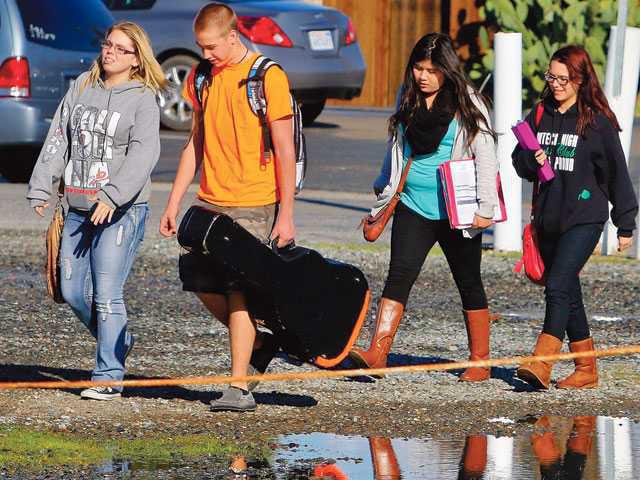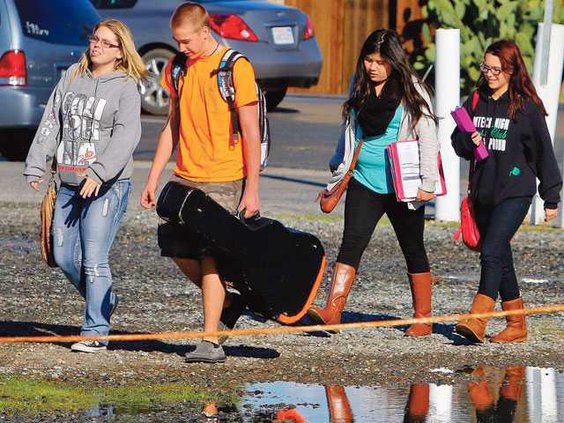For area farmers, it’s 1975-1976 all over again.
There is nothing nostalgic about those memories of nearly four decades ago.
That was the last time it was this dry in winter, to their collective memory. This time of the year is supposed to be the heart of the storm season. Yet, until the trickle of raindrops brushed the thirsty tinder-dry brown fields Wednesday night, the valley had been without rainfall for 53 days in a row.
The two-day precipitation may have yielded barely three-tenths of an inch, “but every little bit helps,” said a still worried hay and row-crop farmer Arnold “Butch” Rothlin of the Manteca-Ripon area. He’s been on his knees praying for rain. He is likewise grateful to know that many churches have been offering special prayers for farmers in their time of need.
The forecast after today indicates the next shot the region has for rain is Saturday, Feb. 8. After that there are only two opportunities on the horizon for precipitation – Feb. 18 and Feb. 28. Reservoirs are at record lows while 2013 was the driest year on record. Gov. Jerry Brown has declared an emergency as California enters is third year of drought.
The Manteca City Council on Tuesday will discuss drought strategies when they meet on Tuesday at 7 p.m.. at the Civic Center, 1001 W. Center St. The South San Joaquin Irrigation District has already told Manteca as well as Lathrop and Tracy that surface water deliveries may be reduced 20 percent this year.
Almond grower Richard Phillips said he was happy the sparse precipitation Wednesday night helped farmers like Rothlin. Alfalfa and other similar crops are just starting to grow around this time; “they will just die if they didn’t get any water,” Phillips noted.
Almond farmers like Phillips are equally impacted by the overstaying drought.
“Right now, they (almond trees) are starting to bud so the roots are looking for a little bit of water,” noted the longtime farmer and owner of P&P Farms on North Union Road in Manteca.
Blooming season is expected to start in earnest at the start of February, around the time when the Almond Capital of California stages its world-popular annual Almond Blossom Festival.
Phillips and other drought-worried farmers did not even wait for any announcement of coming rainfall to get into action. Water pumps that have been put in place in 1977 were activated last week. Phillips and some fellow farmers pumped at least 10 inches of water on a 25-acre field which took two days of irrigation. Another 20-acre of field was also flooded, with irrigation taking place about a day.
He and two or three farmers got together in 1977 and “put a put a pump in my field,” Phillips recalled. It was used during part of 1977 and 1978. “We haven’t used it since 1978,” he said.
“If it continues to be dry for another week or so, we’ll be starting the pumps back and start to irrigate again,” he said.
Not everybody has the financial luxury of having a water pump though, Rothlin pointed out.
“It’s very expensive,” he said about digging in a well. About 40 years ago, his parents installed one to the tune of $25,000. Today, he estimates that would probably cost easily around $100,000.
Having a well to irrigate the fields is no guarantee, either, Rothlin added. Most of his properties have wells, he said, “but they don’t work well” and getting them fixed is neither easy nor cheap.
And, getting wells fixed or installing one at a time like this is like getting a repairman to come and fix your air conditioning unit when the weather hits 100 degrees, said Rothlin. “You have to get in line, too, because they are just overwhelmed.”
“In 1977, you couldn’t get anybody to dig your well because they were too busy,” Phillips said about his own experience. That year, he put in an application with a Modesto company in April. When they called him back to tell him they were ready to start digging, it was already December.
Farmers and other subscribers don’t start receiving water from South San Joaquin Irrigation District until the middle of March. About two years ago, SSJID let their water subscribers irrigate in January. But Phillips does not expect that to happen this time because of the drought which prompted Governor Jerry Brown to declare a state of emergency earlier this month.
While area farmers are deeply worried about Mother Nature’s serious threat to their main livelihood, their hearts also go out to their colleagues in the industry who are faring just as bad, maybe even in a far worse situation.
“They are worse off down south, all the way to Harris Ranch. Those guys have almonds, pistachios, lemons, oranges. It’s rough for everybody. I feel bad, but I’m not the only one having a hard time,” Rothlin said.
The valley may have received just a slim soaking from the last two days’ precipitation, but it has a silver lining – that of rebuilding the snowpack in the Sierra from which the region draws its water supply when it starts to thaw. While the National Weather Service’s projection was just 0.19 inches of rain from Wednesday until today, projections in the higher elevations sounded more promising: 1.16 in Sonora, 1.47 in Strawberry, and 1.08 in Groveland. As much as 24 inches of snow at the crest of Sierra Nevada could later translate into water melting into the Stanislaus and Tuolumne rivers which are the main water sources for the Northern San Joaquin Valley and Bay Area.
Whats that wet stuff?
Farmers grateful for first rain in 53 days



